These tragic photos and stories capture the horrors of the Nanking Massacre — a.k.a. the Rape of Nanking — committed by Japanese soldiers against Chinese civilians.





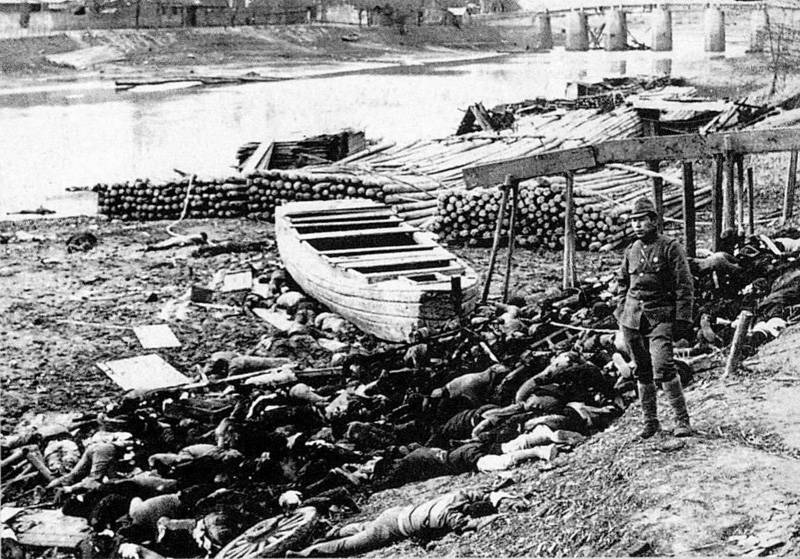



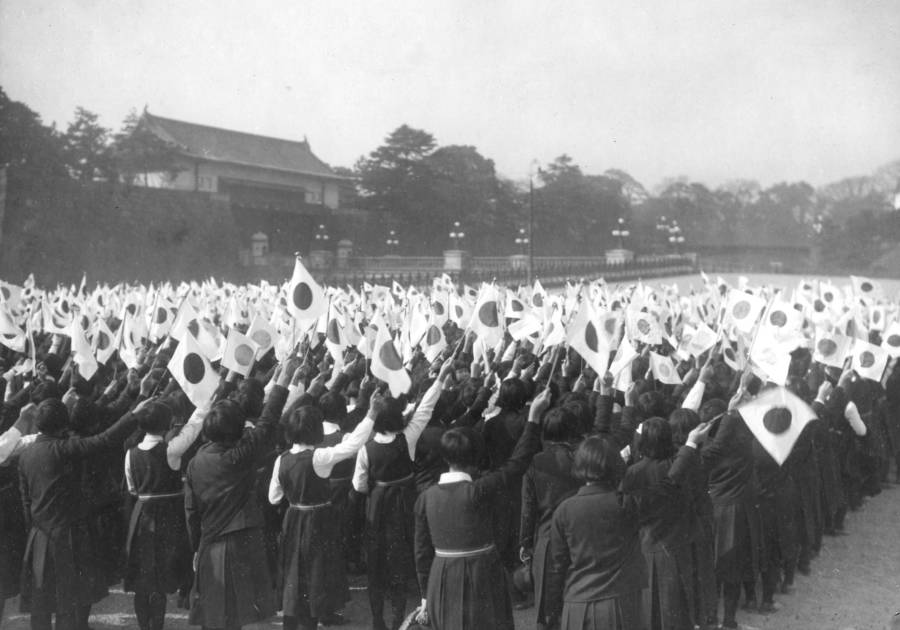
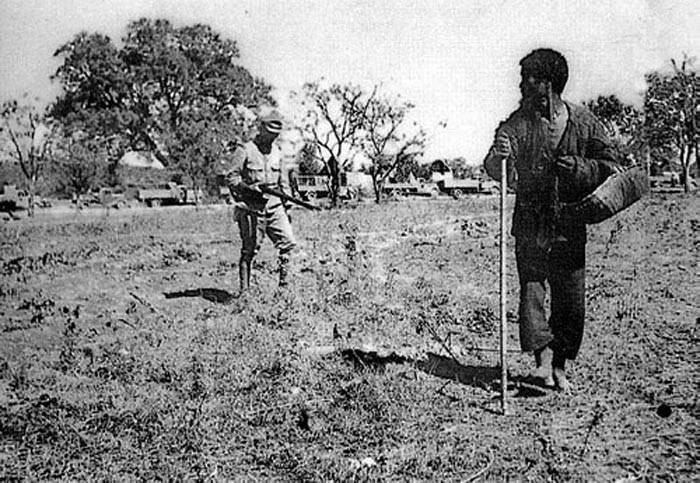



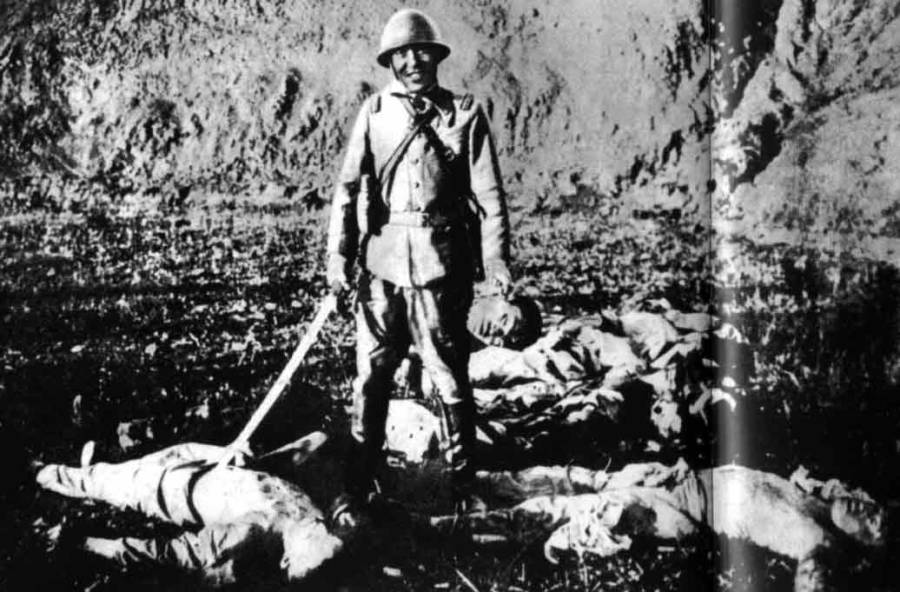


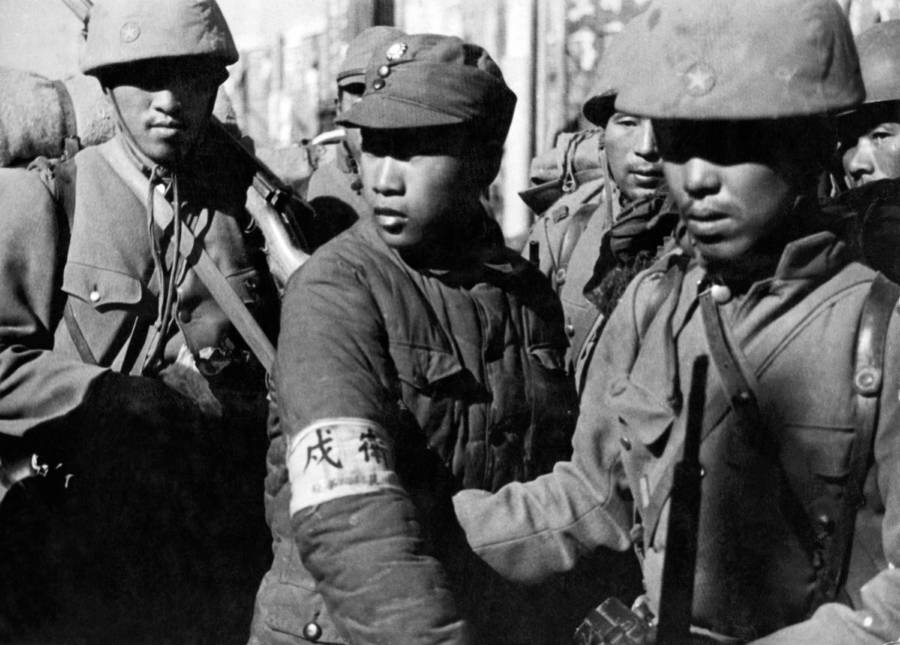
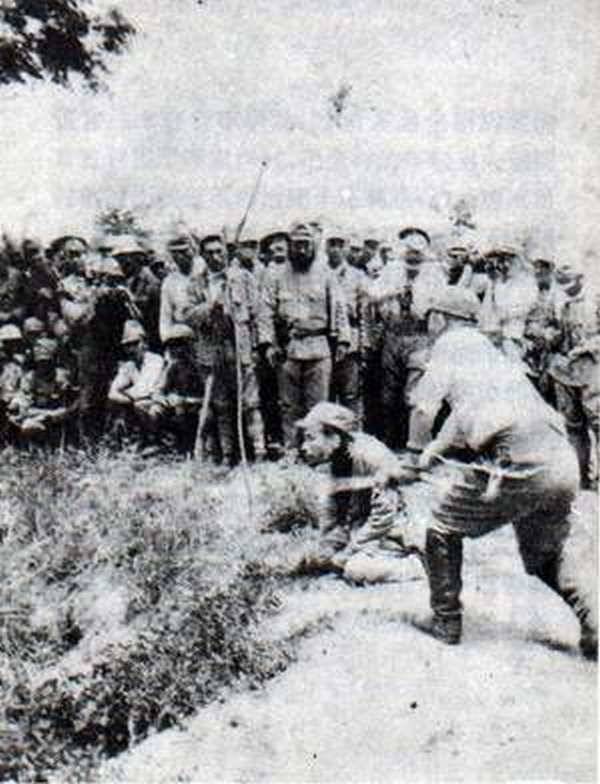

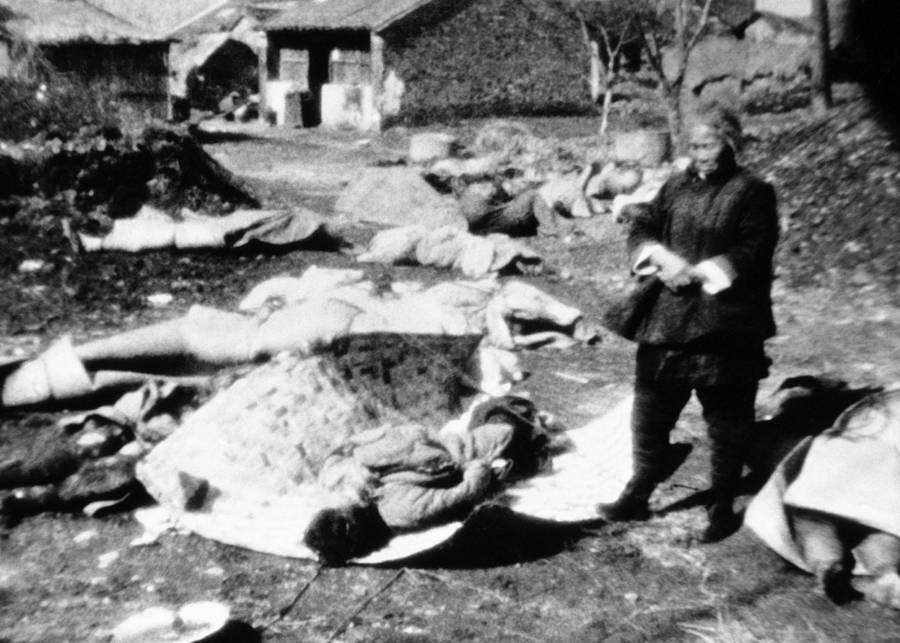
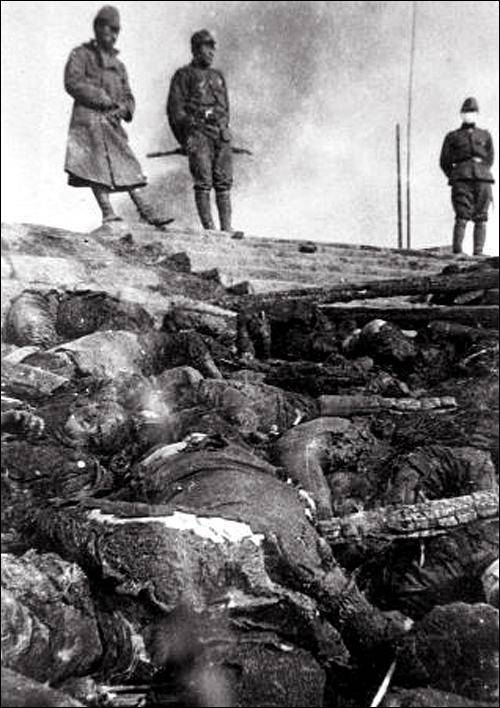
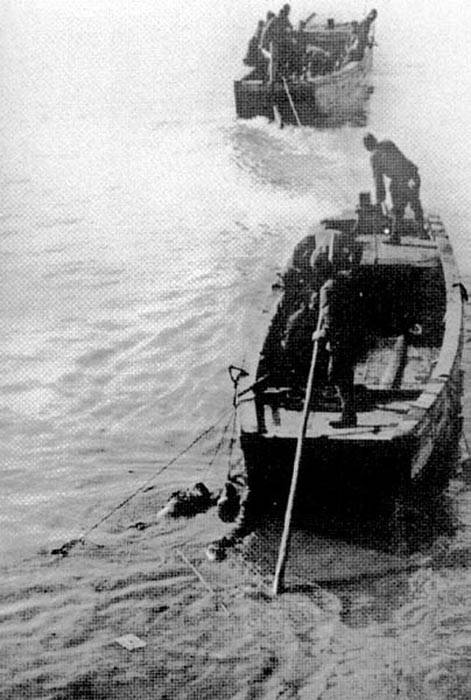

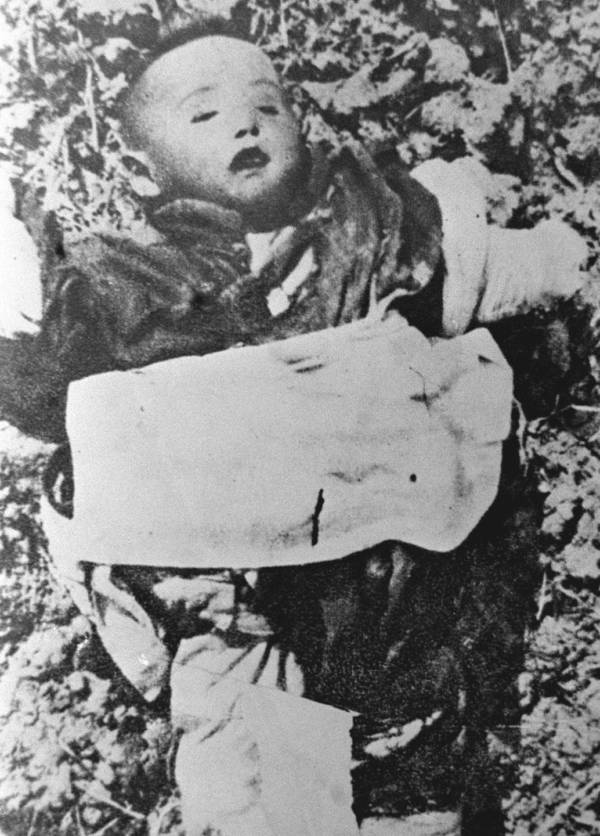

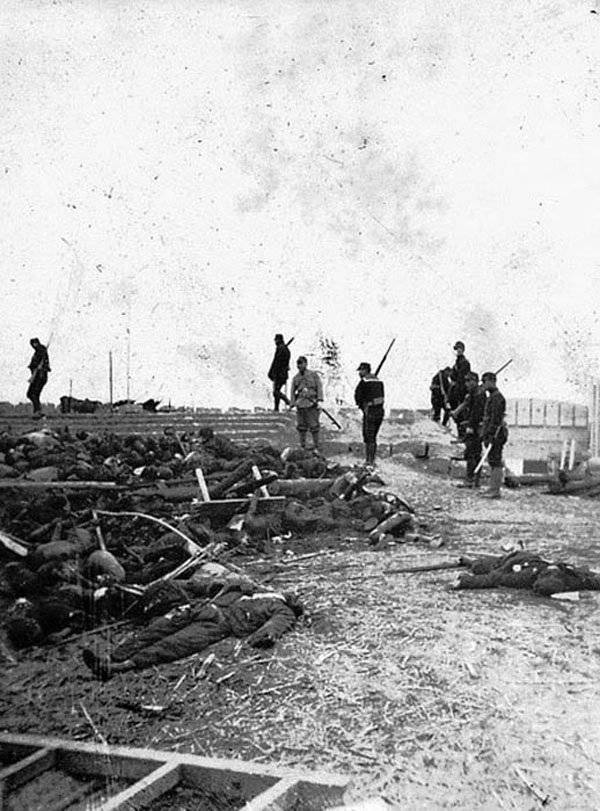
Like this gallery?
Share it:
And if you liked this post, be sure to check out these popular posts:
1 of 28
A young Chinese civilian kneels down, his hands tied behind his back, as he awaits execution by beheading at the hands of a Japanese soldier during the Nanking Massacre.Wikimedia Commons
2 of 28
A 16-year-old girl who had been gang-raped and infected with a venereal disease by Japanese soldiers during the Nanking Massacre.Wikimedia Commons
3 of 28
Left: A Chinese woman is tied to a pole and forcibly kissed by a Japanese soldier. Right: Elsewhere, a man is left blindfolded and tied up.Wikimedia Commons
4 of 28
An article describing "The Contest To Cut Down 100 People" — a brutal competition in which two Japanese soldiers challenged one another to massacre as many people as possible. The shocking headline reads, "'Incredible Record' — Mukai 106 — 105 Noda — Both 2nd Lieutenants Go Into Extra Innings."
5 of 28
A Chinese man holds his son, who was wounded in a bombing, and begs for help.Wikimedia Commons
6 of 28
Dead bodies lying next to the Qinhuai River.Moriyasu Murase/Wikimedia Commons
7 of 28
Chinese victims being buried alive during the Rape of Nanking.Wikimedia Commons
8 of 28
Dead bodies litter the area as Japanese soldiers push a cart to carry their ill-gotten gains as they loot buildings. Wikimedia Commons
9 of 28
A man kneels down and awaits execution by sword.Wikimedia Commons
10 of 28
Japanese schoolgirls, in front of the Imperial Palace in Tokyo, Japan, wave their flags to celebrate the Japanese conquest of Nanking.PhotoQuest/Getty Images
11 of 28
A Japanese rifleman approaches a Chinese farmer. Soon after this photo was taken, the Chinese farmer was shot dead.Moriyasue Murase/Wikimedia Commons
12 of 28
Chinese prisoners being used as live target practice for Japanese soldiers trying out their bayonets.Bettmann/Getty Images
13 of 28
About 14,777 Chinese prisoners of war are gathered together after surrendering to the invading Japanese Army. Few — if any — of these men were likely spared.Wikimedia Commons
14 of 28
Japanese leaders General Iwane Matsui (foreground) and Prince Asaka ride into Nanking shortly after its capture. Wikimedia Commons
15 of 28
A grinning Japanese soldier holds the severed head of a victim in his hand.Wikimedia Commons
16 of 28
A Japanese soldier prepares to publicly behead a young Chinese boy.Bettmann/Getty Images
17 of 28
Dead bodies lying scattered across steps.Universal History Archive/UIG via Getty Images
18 of 28
Japanese soldiers escort a captured Chinese fighter during the fall of Nanking.Underwood Archives/Getty Images
19 of 28
This photo was captured just as a Japanese soldier's sword sliced through the neck of a Chinese prisoner.Wikimedia Commons
20 of 28
Young Chinese men with their hands bound together are piled into a truck. After this photo was taken, the group was driven out to the outskirts of Nanking and killed.Xinhua/Getty Images
21 of 28
"After being stripped and raped by one or more men," a reporter for LIFE magazine wrote, describing the carnage that had occurred just before this photograph was taken, "she was bayoneted in the chest, and then had a bottle thrust into her vagin*." The victim's entire family — including her one-year-old baby — was massacred.LIFE magazine/Wikimedia Commons
22 of 28
Japanese troops massacre Chinese soldiers and civilians along the Yangtze River and burn the dead.Wikimedia Commons
23 of 28
Japanese soldiers drag the dead into the Yangtze River behind a boat.Wikimedia Commons
24 of 28
A seemingly endless field of dead bodies, lying on the ground after the Rape of Nanking.Itou Kaneo/Wikimedia Commons
25 of 28
A three-year-old child lies dead on the ground during the Rape of Nanking.Xinhua/Getty Images
26 of 28
The burned body of a Chinese man, who'd been doused in kerosene and set on fire.Wikimedia Commons
27 of 28
Japanese soldiers stand amid a pile of dead bodies during the Nanking Massacre.Itou Kaneo/Wikimedia Commons
28 of 28
Like this gallery?
Share it:




‘The Forgotten Holocaust’: 27 Tragic Photos From The Rape Of Nanking
View Gallery
Many Westerners know full well about the horrors that have happened on their side of the world throughout history. But, all too often, when an atrocity happens on the other side of the world, most people in the West don't hear much about it or think much of it.
Alongside all of the catastrophes that plagued Europe during World War II, the atrocities committed in Asia were every bit as disturbing — even if many people in the West hardly ever learn about them in school.
And few acts of barbarity committed in Asia during the war were as terrible as the Nanking Massacre, also known as the Rape of Nanking.
While Europe was struggling to hold off the Nazi war machine, China was falling victim to the Japanese invasion that first launched in late 1937. The Japanese Empire sought to conquer much of East Asia and the Pacific — and fought with almost unimaginable brutality to make that happen.
In the end, China lost as many as 20 million lives (the second most of any country involved in the war), according to the National World War II Museum. And as many as 17 million Chinese casualties weren't soldiers. They were civilians, and many of them were put through hell before they were killed.
Some of the worst of it occurred over the six weeks after the Japanese stormed into the Chinese capital of Nanking (now known as Nanjing) in December 1937. And the city would never be the same again.
The Brutal March Before The Rape Of Nanking
The rape and murder that would soon envelop Nanking started before the Japanese Army ever reached the city walls. The Japanese Army was moving through China at the outset of their invasion, massacring and looting with strict orders to "kill all captives." The Japanese didn't stop there, though.
Among the invading army, nothing was forbidden, and this would pave the way for many of the soldiers to indulge in their most violent fantasies.
One Japanese journalist, traveling with the 10th Army, wrote that he believed the army moved forward with such strength because of the "tacit consent among the officers and men that they could loot and rape as they wish."
The Beginning Of The Nanking Massacre

Universal History Archive/Universal Images Group via Getty ImagesOne of many horrific scenes from the Rape of Nanking, which took place from December 1937 to January 1938.
When the Japanese Army reached Nanking, their brutality continued unabated. They burned down the city's walls, people's homes, the surrounding forests, and even whole villages situated in their path.
They looted nearly every building that they could find, stealing from the poor and the rich alike. They then slaughtered scores of people that they happened upon. Some victims of the Nanking Massacre were thrown into mass, unmarked graves. Others were simply left to rot in the sun.
To the invading army, the Rape of Nanking was sometimes even a game. Japanese magazines bragged about a contest between two soldiers, Toshiaki Mukai and Tsuyoshi Noda, who had challenged one another in a race to see who could slaughter 100 people with their swords first.
Worse yet, the people who these two men cut open weren't enemy combatants killed on the battlefield. By the men's own admission, the victims were unarmed, defenseless people. According to the book The Nanjing Massacre, Noda admitted, after the war ended: "We'd line them up and cut them down, from one end of the line to the other."
What's more, this admission wasn't an apology. Just seconds before, Noda had scoffed at his victims for letting him kill them, saying, "The Chinese soldiers were so stupid." He also added, "Afterward, I was often asked whether it was a big deal, and I said it was no big deal."
Inside The Horrors Of The Rape Of Nanking
In the six weeks during which the Japanese perpetrated the Nanking Massacre starting on December 13, 1937, an estimated 20,000 to 80,000 Chinese women were brutally raped and sexually assaulted by the invading soldiers, according to the book The Rape Of Nanking. They sometimes went door-to-door, dragging out women and children and gang-raping them. Then, once they'd finished with their victims, they often murdered them.
Such killing wasn't just an act of senseless barbarity, either — these men were following orders. "So that we will not have any problems on our hands," one commander told his men, referring to any women they've raped, "either pay them money or kill them in some obscure place after you have finished."
And the invaders didn't kill their victims quickly during the Rape of Nanking. Instead, they often made these women and children suffer in the worst ways possible. Pregnant mothers were cut open, and rape victims were sodomized with bamboo sticks and bayonets until they died in agony.
"Never I have heard or read such brutality," one American missionary in Nanking, James M. McCallum, wrote in his diary. "Rape! Rape! Rape! We estimate at least 1,000 cases a night and many by day."
"On December 16, seven girls (ages ranged from 16 to 21) were taken away from the Military College," read one disturbing report from the International Committee (a group of foreigners who established the Nanking Safety Zone to provide a place of refuge for Nanking Massacre victims). "Five returned. Each girl was raped six or seven times daily."
"One old woman 62 years old went home near Hansimen, and Japanese soldiers came at night and wanted to rape her," read yet another chilling report from the committee. "She said she was too old. So the soldiers rammed a stick up her. But she survived to come back."
Meanwhile, Tillman Durdin, a writer for The New York Times who was on the scene, wrote, "I drove down to the waterfront in my car. And to get to the gate, I had to just climb over masses of bodies accumulated there... The car just had to drive over these dead bodies." Once he reached the waterfront, he witnessed the massacre of 200 men within just 10 minutes.
The extent to which Japanese officials were aware of such atrocities during the Nanking Massacre has long been a matter of debate. For one, Japanese General Iwane Matsui, commander of the forces in China, claimed that he was unaware of mass crimes but nevertheless felt morally responsible.
Ultimately, he was convicted and executed for his part in the massacre after the war ended. But in the decades since then, the legacy of the Rape of Nanking has proved to be a most contentious issue.
The Disturbing Legacy Of The Massacre Today

LIU JIN/AFP via Getty ImagesThousands of Chinese soldiers and civilians mark the 70th anniversary of the Nanking Massacre at the Memorial Hall of the Victims in Nanjing Massacre by Japanese Invaders in Nanjing in 2007.
By the time the worst of the Rape of Nanking had ended, one estimate claimed that about 300,000 people died. Then, when Japanese soldiers and officials were tried and executed for war crimes just after World War II, a court found that at least 200,000 had perished during the Nanking Massacre.
However, death toll estimates vary widely, with some as low as 40,000. Moreover, controversy surrounds these estimates, reflecting just how divisive the "forgotten Holocaust," in the words of author Iris Chang, remains today.
The Japanese government, for example, didn't officially apologize for its World War II-era atrocities until 1995 — and even that relatively recent apologetic stance hasn't been unanimous and universal.
In 1984, for instance, the Japanese Army Veterans Association conducted interviews with Japanese veterans present during the Nanking Massacre in an effort to refute reports of Japanese atrocities.
But the organizers of the research were surprised to find that the veterans were forthcoming about the atrocities, and the magazine of the Veterans Association was forced to run an apology for the Rape of Nanking:
"Whatever the severity of war or special circ*mstances of war psychology, we just lose words faced with this mass illegal killing. As those who are related to the prewar military, we simply apologize deeply to the people of China. It was truly a regrettable act of barbarity."
However, within just the last 10 years, dozens of Japanese officials and politicians have refused to accept responsibility for the massacre. And some have even denied that it happened at all. In 2015, Japanese Prime Minister Shinzō Abe issued a statement to mark the 70th anniversary of World War II's conclusion and drew widespread criticism for not actually apologizing for Japan's atrocities in the process, according to Foreign Policy. Incidents like these have helped fuel current tensions between China and Japan.
To this day, denials of the atrocities persist despite countless firsthand witnesses from France, the United States, Germany, and Japan. The denials even persist despite photographs like the ones in the gallery above that make the truth of the Nanking Massacre disturbingly clear.
After this look at the Rape of Nanking, learn about the horrors of Japan's Unit 731, which conducted disturbing experiments on live prisoners. Then, read about other appalling Japanese war crimes that were committed during that period.